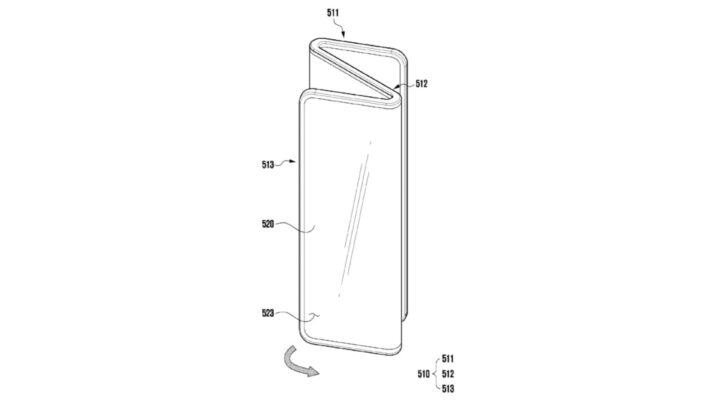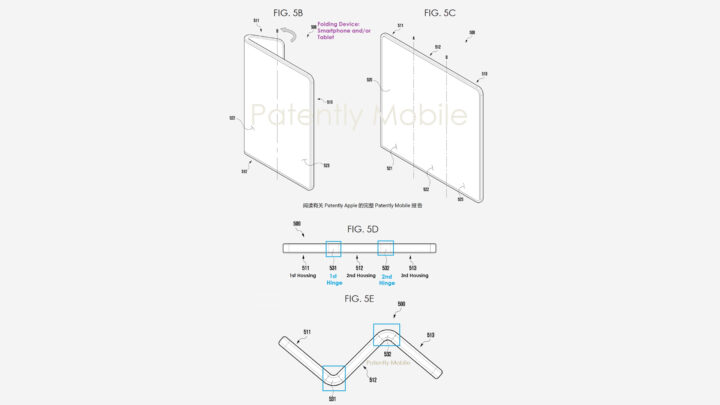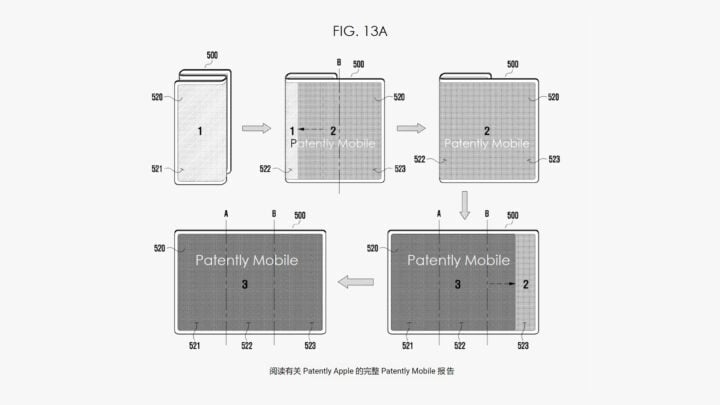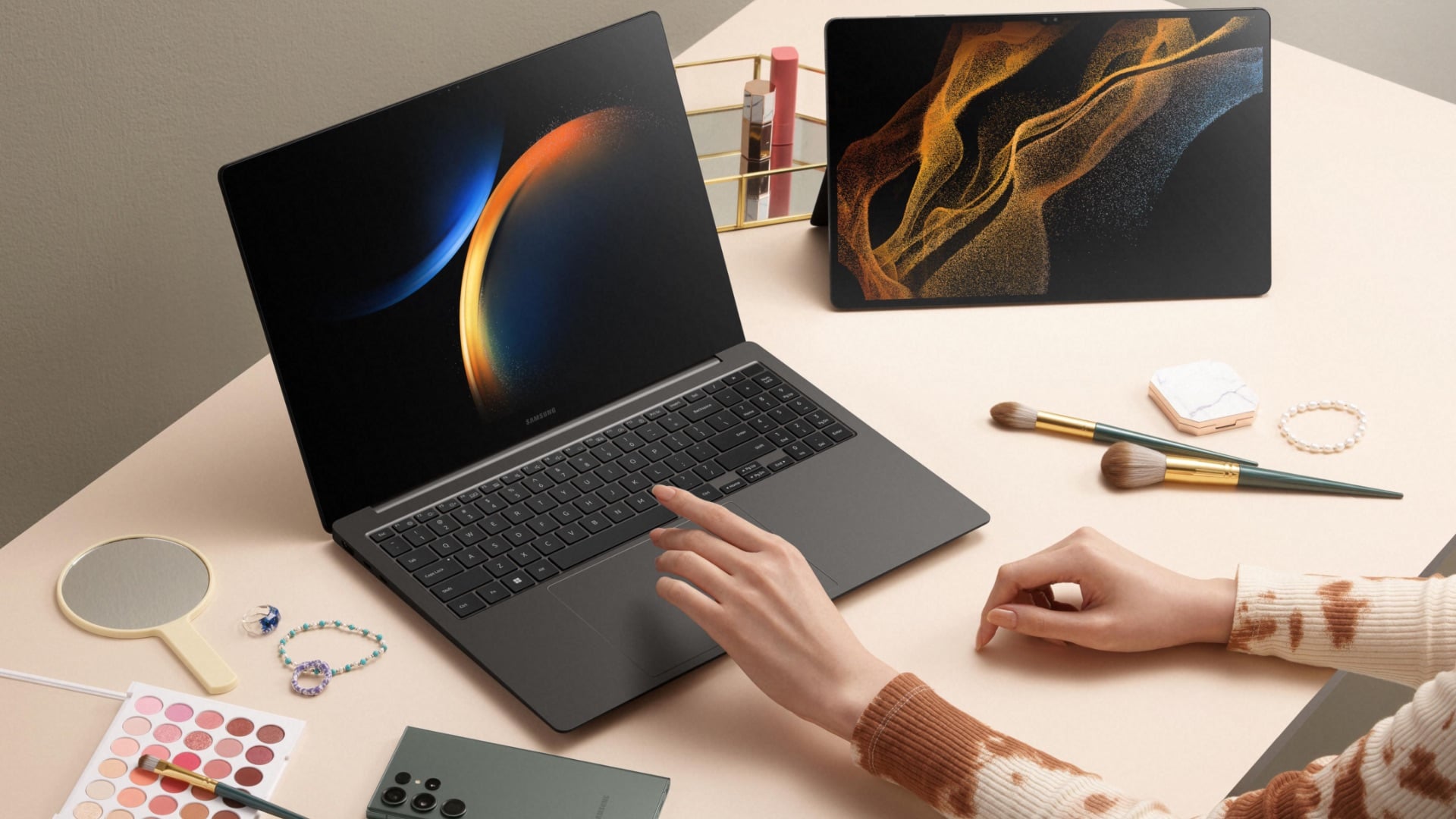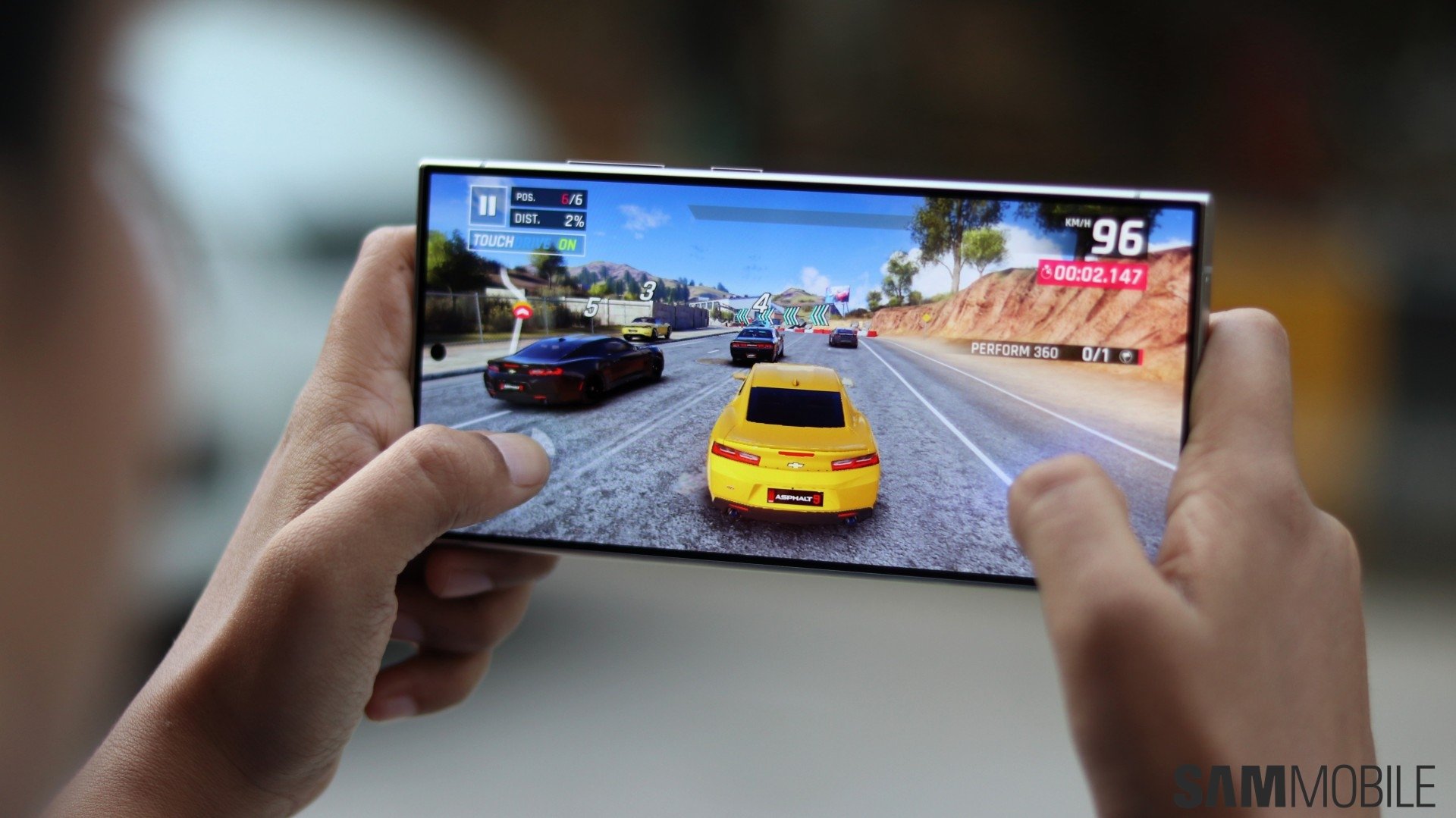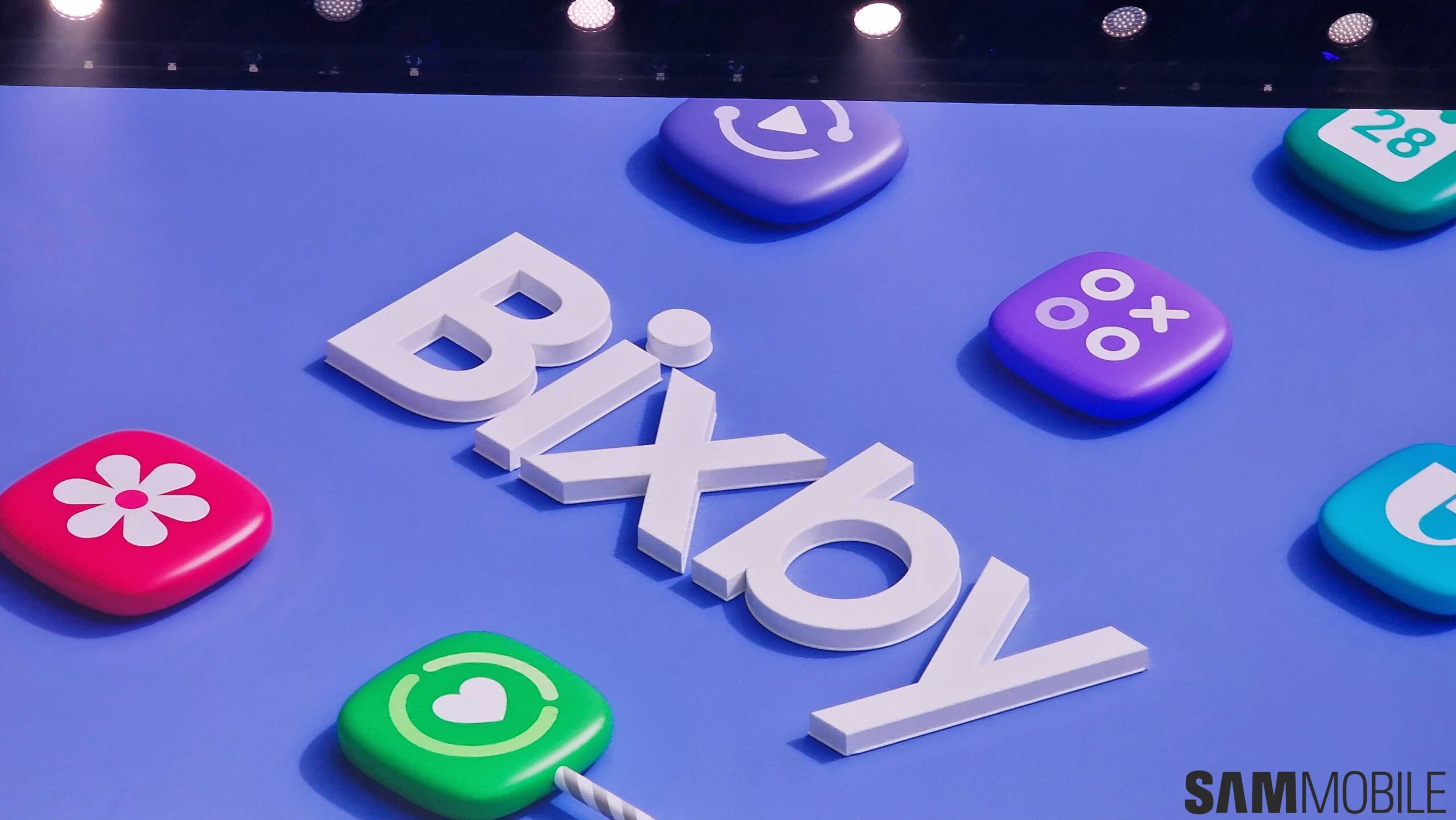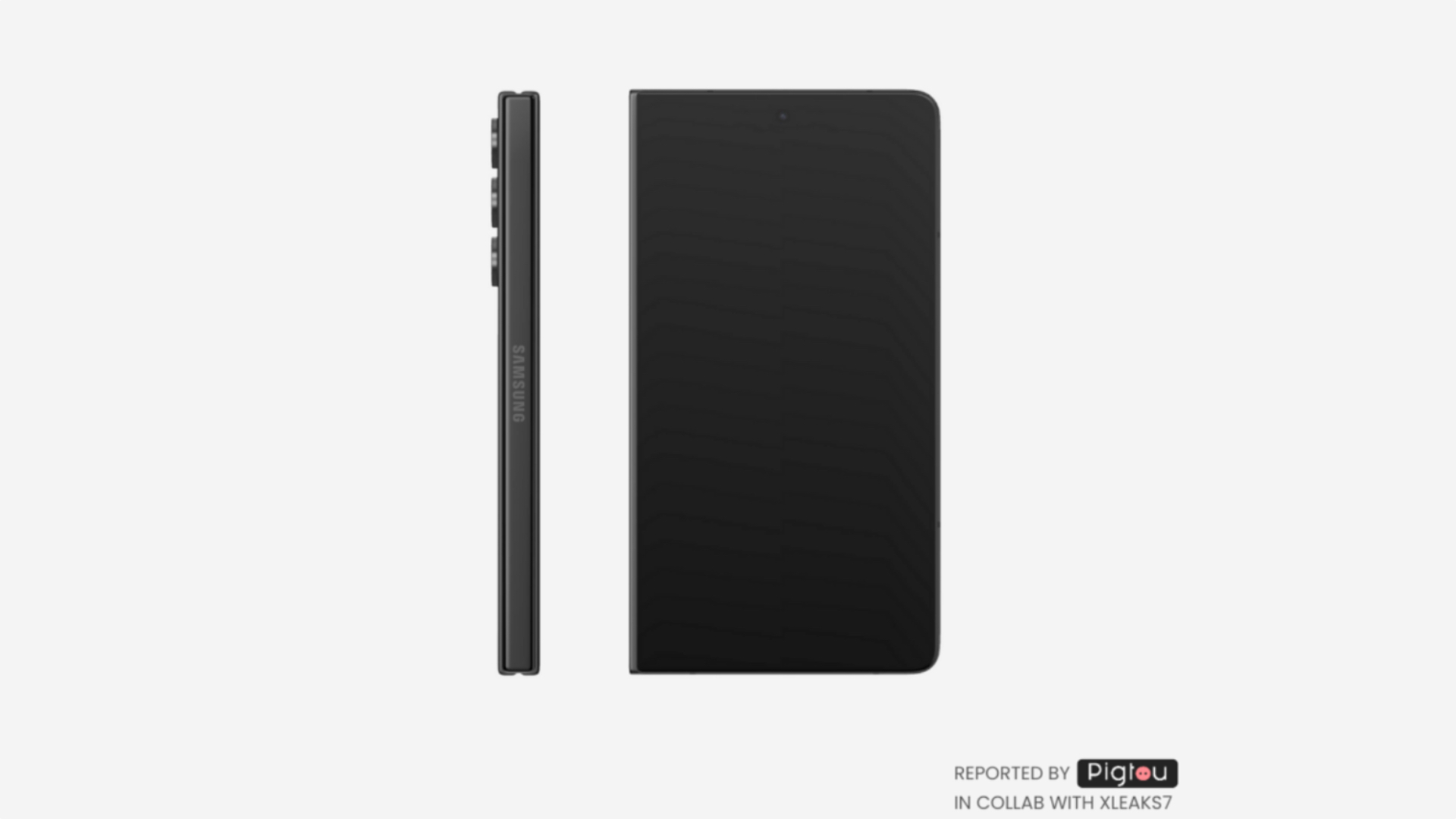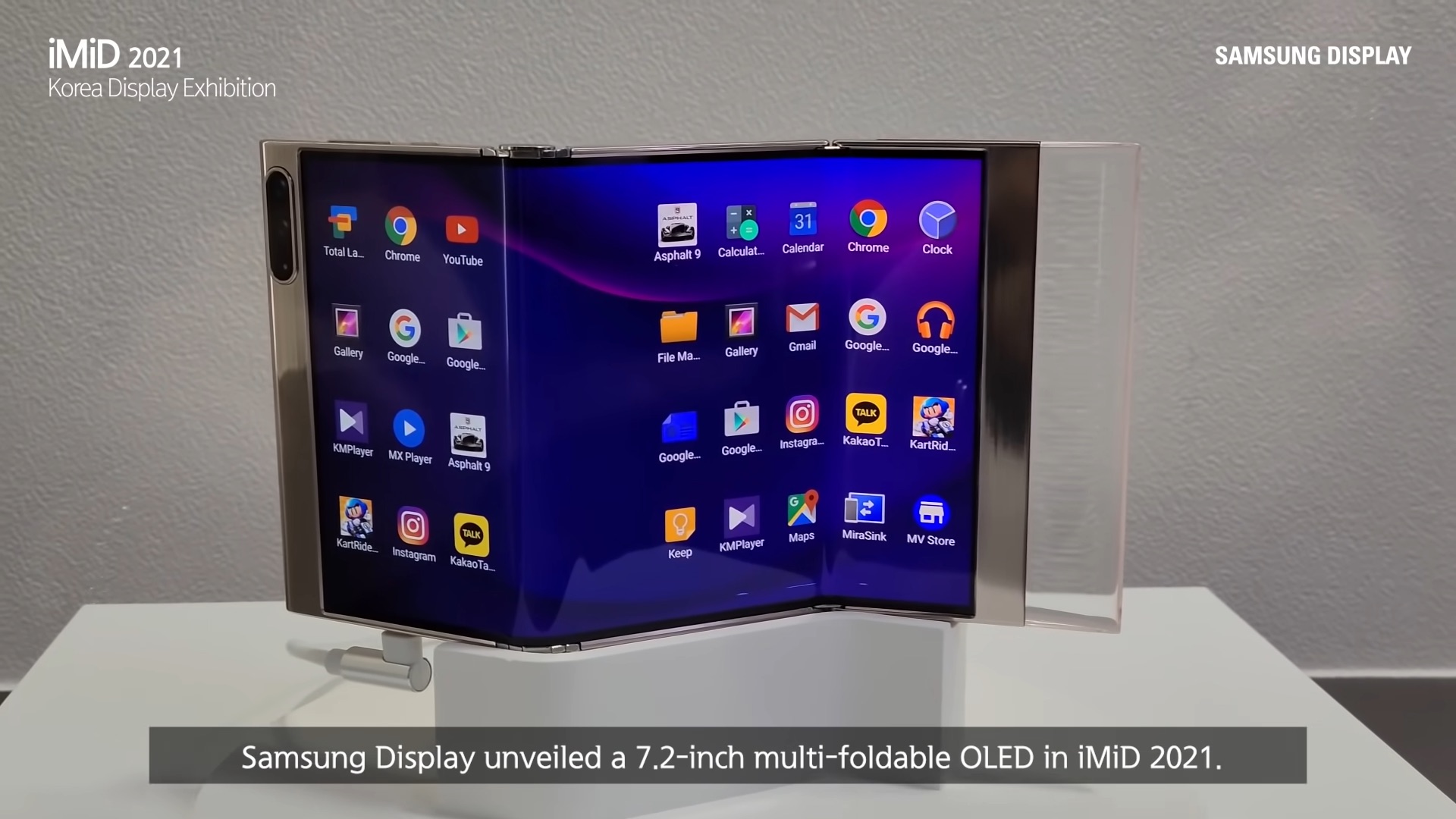
It has filed a new patent related to tri-folding smartphones with the USPTO (via Patently Apple). The patent was revealed last week, showcasing the possible design and working intricacies of such devices. The patent shows a device that uses two hinges to fold a phone and its large OLED screen into three equal-sized parts, forming a zig-zag shape. The device essentially turns from a tablet to a compact smartphone, allowing users to use the big screen when watching photos/videos and browsing the web in tablet mode and converting it into a smaller device when traveling.
Samsung's new tri-fold phone patent shows sensors and chips embedded into the hinges to adjust the operating system's UI
The patent describes the use of sensors and chips in the hinges of the device to know which state the phone is in. For example, if both hinges are fully open, the sensors will relay that information to the processor, which then shows UI elements on all the parts of the screen. If the phone is folded in a way that only one of the three parts of the screen is visible, the OS will display the UI only on that part.
Over the past 3-4 years, Samsung has secured a lot of critical patents related to foldable smartphones. It wants to be fully ready with its best products and technologies by the time Apple launches its first foldable smartphone. While earlier patents focused on the folding mechanism of the hinge and the screen, this new patent focuses more on how the folding state of the device is reported to the OS, which shows that the company is now closer than ever to an actual product.












